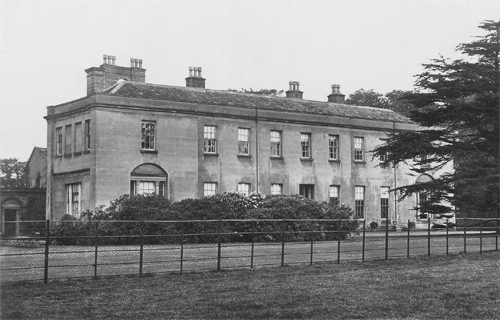Astle Hall
Cheshire
| Location | Chelford | ||
| Year demolished | After 1926 | ||
| Reason | Unknown | ||
| See all images: | Gallery | ||
| << Back to the main list |
Text kindly provided by, and © of, Andrew Lamberton
The Hall was built in 1749 for John Parker and erected on the site of an older hall called Mill or Milne House. He was succeeded by his son, also John, who became the Rev. John Parker and he had one son, Thomas and five daughters. Thomas succeeded his father in 1795 and in the same year, married Dorothy, daughter of Thomas Cholmondeley of Vale Royal. They had no children and so the estate was purchased in 1833/4 by Henry Dixon Esq. the eldest son of Lydia Parker (the third daughter of the Rev. John Parker).
 Sales particulars of the estate in 1833 describe the hall as:
Sales particulars of the estate in 1833 describe the hall as:
"a most capital mansion house, very substantially constructed ...presenting a regular Front of One Hundred and Twenty two feet……the modern part of the House comprises, On the principle Entrance Floor, a Suite of Very Excellent Apartments, elegantly fitted up, with beautiful Mahogany Doors, consisting of a Breakfast Room 21ft by 16 ft 6 in; large Library with two Fireplaces 40 ft by 23 ft; Drawing Room 31 ft by 21 ft; and a noble Dining Room 34 ft 6in by 19 ft 6 in; with large bow and an Ante –room communicating therewith. A spacious back Hall with Water- closet at the end and a handsome oak Staircase with mahogany Rail, leading to a spacious long Gallery on the principle Chamber Floor, communicating with seven large airy Bedrooms, two Dressing Rooms and a Water-closet.”Henry Dixon died in 1838 without issue and was succeeded by his brother John. He had a total of eleven children and when he died in 1873, he was succeeded by his eldest son, George. He had previously joined the army at 17 and served in the Kings Own Borderers for 13 years. George died in in 1924 and was succeeded by his son John .
The house had been remodelled and given a stucco finish and for a time, the old timber-framed fabric at the back of the house remained. In 1926, the house was bought by a Mr R.S.Provis and converted into a nursing home. It has since been demolished although some irregular fragments survive.